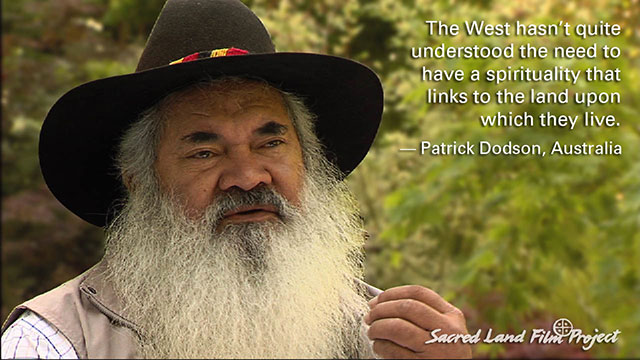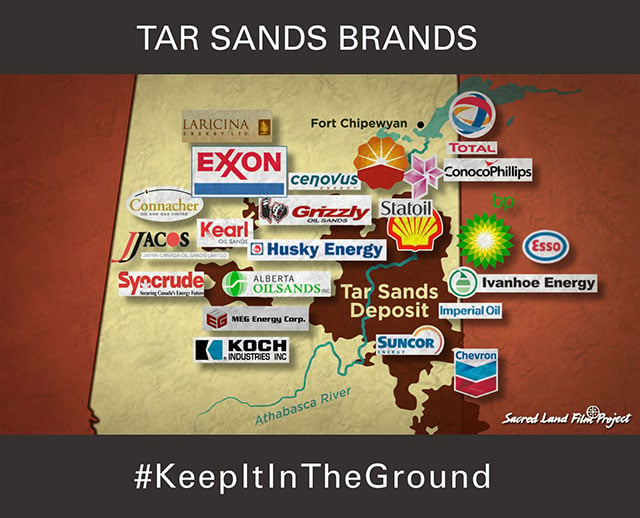
Conjure these images, if you will. All over the planet, invisible to a spectacle-obsessed media, indigenous people are putting their bodies on the line in defense of their most sacred places. In recent months: the Uwa of Colombia have dispatched Indigenous Guardians to blockade a road into a national park after a climbing team staged a soccer game on top of the Uwa’s most sacred mountain, Zizuma. In Honduras, the tears of hundreds of villagers flowed into the sacred river that Berta Cáceres fought to defend from a dam until assassins gunned her down in her bed. The San Carlos Apache continue their year-long occupation of Oak Flat in Arizona, a sacred initiation site that was traded off in a late-night, end-of-year Senate deal that handed the land to a London-based corporation planning a giant copper mine. And after Native Hawaiian protestors blockaded construction equipment sent to build a Thirty Meter Telescope on sacred Mauna Kea, a judge dismissed the charges. She agreed with defendant Craig Neff that defense of the mountain is defense of self.
These historic struggles are changing the way we see the Earth and they are changing the law. The rights of nature and the rights of future generations are visible now.
Over 40 years as a documentary filmmaker, I have watched the evolution of a movement that is now in full flower. Of course, global indigenous resistance began long ago, well before 1492. But the reach of extractive, destructive technology into more and more remote areas has triggered an explosion of indigenous activism. Social media enables instantaneous global communication free of corporate control. “Idle No More” is the potent rallying cry, though it’s important to remember that some native elders would prefer different framing. The late Hopi spokesman Thomas Banyacya once said to me: “We are not resisting. We are living.” But these days, just living often requires fierce defense of homeland, and the homeland is Mother Earth.
I spent the last ten years producing and distributing a documentary film series on indigenous communities’ defense of places of spiritual significance. Standing on Sacred Ground is being nationally televised for the second time on The PBS World Channel to celebrate Earth Day.
The initial response to the series from mainstream media was disappointing, but not surprising. Long-format documentaries with complicated stories of environmental threats—even docs featuring eloquent indigenous leaders and extraordinarily beautiful imagery (from Peru, Ethiopia, Papua New Guinea, Australia, Russia, Canada, Hawai’i and California)—find it hard to compete for viewers in an era of video-watching plenty.
No longer are documentary makers competing with other serious and deep films; we are competing with everything from binge-watchable TV series to internet cat videos. The quantity of “films” has exploded along with the range of viewing platforms available. People feel like they don’t have enough time to see what needs to be seen, and that includes writers who cover important media offerings.
But social media is a great equalizer. On social media, We were surprised when one of our memes was quickly shared a thousand times. The message, all captured in one image: while indigenous people make up just 4% of the world population and now control only 22% of the land, those ecosystems contain 80% of the remaining biodiversity on the planet.

Why is that? What does that mean? At the heart of all indigenous territories are sacred places that anchor culture, community and individual to place. The values of restraint, respect and reciprocity flourish as nature’s power and beauty work on each human soul. The community includes all life forms, including past ancestors and future beings. Shamans and healers translate messages from plants, animals, bubbling springs and shooting stars. Generations of traditional ecological knowledge get passed on, all linked to specific places revered through ceremonies and songs, and in languages far more expressive and spiritually-attuned than English. And biodiversity flourishes with these cultural values.
This is good news. It is an argument affirming the wisdom of people who have long been dismissed by a racist, Christian, heirarchic, science-obsessed dominant culture. Few PhDs maybe, but lots of biodiversity. Recognition comes almost too late.
Another of our memes that traveled far and wide acknowledged the #KeepItInThe Ground movement that indigenous communities are powering through their leadership of the fight that stopped the Keystone XL pipeline. One of our film stories captures the moral outrage unfolding in the tar sands region of Alberta, Canada. Deformed fish, lethal cancers, polluted water, corrupt science serving an industry in bed with government. Few Americans realize that we are burning tar sands oil in our cars, with 1.4 million barrels per day being imported into the U.S. even without Keystone XL.

Idle No More and indigenous leadership are making a difference in the fight to protect ecosystems, respond to climate change and redefine “conservation.”
Native intellectuals have also developed a profound analysis of how links between Christianity and capitalism have undermined both communities and conservation. Anishnaabeg author and activist Winona LaDuke observes in the film, “We ended up with a belief that it doesn’t matter what we do here because salvation is someplace else. So let ’em mine. Let ’em dam. That must be God’s will, because our salvation is in the next world. That whole set of religious teachings has very dangerous implications for indigenous communities and has been absolutely essential to the interests of mining corporations and governments in the religious and spiritual domination of peoples.”
Meanwhile, aboriginal communities are creating Indigenous Protected Areas and are redefining what it means to “manage” land — integrating a spiritual relationship with the physicality of nature. These indigenous guardians teach that politics is not enough, nor is “science.” With heart and mind in balance humans manifest a full intelligence, connected to the earth, listening, watching, for many years, with humility.
One such place featured as the concluding story of our Standing on Sacred Ground film series is the Hawaiian island of Kaho’olawe, which the U.S. Navy used as a bombing target and weapon-testing-range for 50 years after Pearl Harbor. Hawaiians occupied the island in the 1970s as the native rights movement was born, and eventually they stopped the bombing and won the island back. They are now restoring the island, both ecologically and spiritually, using science and ceremony. Their decades-long struggle taught the lesson that aloha aina, love for the land, is a winning value and a winning strategy, which teaches that fighting political battles around the environment must be rooted in the spiritual dimension. We have spiritual, as well as physical responsibilities to the planet.
As we celebrate Earth Day there is a lesson in all this. The conservation movement cannot succeed without recognizing and respecting sacred places, traditional ecological knowledge and indigenous rights.
Angry, shocked, overwhelmed? Take action: Support independent media.
We’ve borne witness to a chaotic first few months in Trump’s presidency.
Over the last months, each executive order has delivered shock and bewilderment — a core part of a strategy to make the right-wing turn feel inevitable and overwhelming. But, as organizer Sandra Avalos implored us to remember in Truthout last November, “Together, we are more powerful than Trump.”
Indeed, the Trump administration is pushing through executive orders, but — as we’ve reported at Truthout — many are in legal limbo and face court challenges from unions and civil rights groups. Efforts to quash anti-racist teaching and DEI programs are stalled by education faculty, staff, and students refusing to comply. And communities across the country are coming together to raise the alarm on ICE raids, inform neighbors of their civil rights, and protect each other in moving shows of solidarity.
It will be a long fight ahead. And as nonprofit movement media, Truthout plans to be there documenting and uplifting resistance.
As we undertake this life-sustaining work, we appeal for your support. Please, if you find value in what we do, join our community of sustainers by making a monthly or one-time gift.